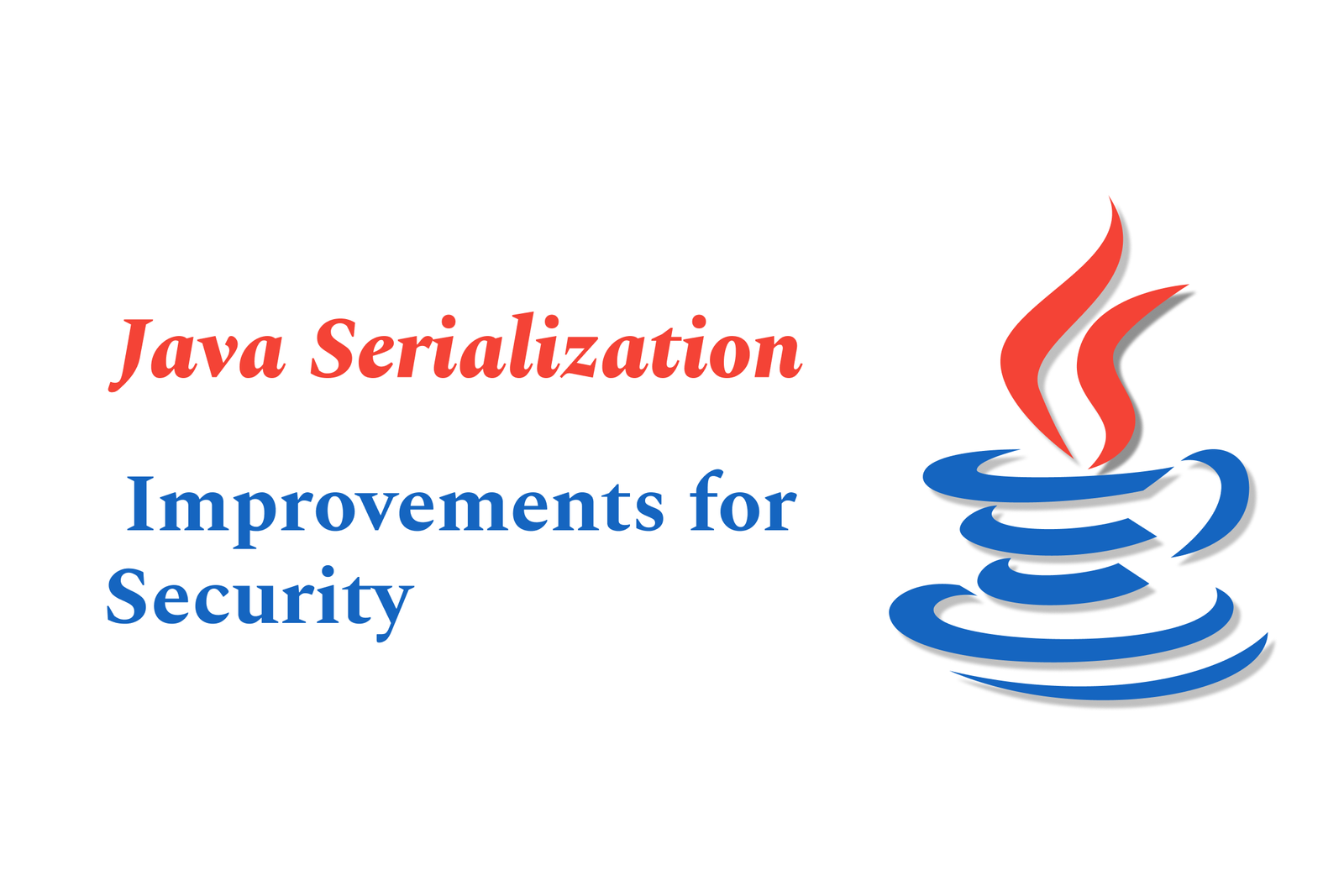Java Serialization Improvements for Security
Java serialization improvements enhance security by introducing context-specific deserialization filters and promoting safer data carriers like Records, which use constructors during deserialization to enforce validation, reducing risks of arbitrary code execution from malicious serialized data.
Java Serialization Improvements for Security
1 ) Background on Java Serialization and Security Risks
Java serialization transforms objects into byte streams for storage or transmission, while deserialization restores objects from these streams. However, deserialization bypasses constructors and uses reflection to populate object fields, including private and final ones, which introduces significant security vulnerabilities. Maliciously crafted serialized data can exploit “gadget chains” to execute arbitrary code, making insecure deserialization a critical security concern.
2 ) Problems with Java’s Original Serialization Design
Serialization in Java is tightly integrated into the platform, bypassing language level safety and ignoring static typing principles.
The compiler offers no assistance to detect serialization errors, pushing problems to runtime.
It uses “magic” methods and fields (e.g., readObject, writeObject) that are undocumented in interfaces or base classes, making them hard to discover and prone to implementation errors.
Custom serialization logic requires imperative coding which complicates maintenance, versioning, and validation.
Serialization is tightly coupled to a specific byte stream format, hindering alternative encoding use (like JSON or XML).
The existing binary stream format is neither compact nor human readable, restricting efficiency and tooling.
3 ) Java 17 Features Addressing Serialization Security
Java 17, the latest Long Term Support (LTS) release, introduces improvements relevant to serialization security:
Records: Java Records use constructors during deserialization, ensuring any validation logic in constructors runs, unlike traditional POJOs where constructors are bypassed. This reduces some risks but does not eliminate vulnerabilities since readObject() is still used by most classes.
Java Flight Recorder (JFR) Improvements: Enhanced monitoring aids in identifying serialization related security events (details not elaborated in the article).
JEP 415 Context Specific Deserialization Filters: Enables applying filters to block or accept deserialization of certain classes at runtime, offering a defensive mechanism against malicious input.
4 ) Best Practices and Remaining Challenges
Employ context specific deserialization filters to whitelist allowable classes during deserialization, preventing unexpected code execution.
Prefer Java Records for immutable, safer data carriers where constructor checks enforce invariants.
Avoid putting unsafe logic in constructors or readObject methods to reduce gadget chain risks.
Recognize that despite improvements, legacy serialization retains risks, especially with normal POJOs using readObject().
Consider alternative serialization frameworks or mechanisms where security is designed in from the start.
5 ) Conclusion
Java continues to enhance its serialization mechanism to improve security, especially with Java 17 features like Records and deserialization filters. However, the intrinsic complexities and legacy design decisions mean serialization remains a security sensitive area requiring careful attention, updated practices, and sometimes alternative approaches to mitigate vulnerabilities effectively.
https://justacademy.in/news-detail/why-react-native-is-perfect-for-startups-on-a-budget
https://justacademy.in/news-detail/building-ios-apps-for-apple-vision-pro:-first-impressions
https://justacademy.in/news-detail/java-23-api-for-foreign-function-&-memory-access
https://justacademy.in/news-detail/top-5-libraries-for-react-native-animation
https://justacademy.in/news-detail/java-and-kubernetes:-tips-for-developers
Related Posts
In 2025, top Angular libraries offer modern, feature-rich components and tools for building dynamic web apps. From powerful data grids to low-code platforms like UI Bakery, these libraries enhance development speed, UI design, and scalability, making them essential for Angular developers.
Migrating from AngularJS to Angular 17 involves gradually upgrading your app by running both frameworks together using tools like ngUpgrade, rewriting components in TypeScript, and adopting Angular’s modern architecture to enhance performance, maintainability, and long-term support.
Angular state management tools help organize and handle app data efficiently, improving scalability and maintainability. Popular options include NgRx for robust, RxJS-based patterns, and newer Signal Store solutions that offer simpler, reactive approaches integrated tightly with Angular’s latest features.
RxJS in Angular empowers developers to manage asynchronous data streams with powerful operators like `forkJoin`, `combineLatest`, and `zip`. Mastering these key operators in 2025 is essential for building efficient, reactive applications that handle complex event sequences seamlessly.
Angular performance optimization in 2025 focuses on improving app speed and responsiveness by using techniques like OnPush change detection, lazy loading, efficient data caching, and AOT compilation. These practices reduce load times, enhance user experience, and ensure scalable, fast Angular applications.
In 2025, Angular remains preferred for large-scale, enterprise apps with its robust, all-in-one framework, while Vue attracts developers seeking simplicity and fast development for smaller projects. Both frameworks excel, with choice driven by project needs and team expertise.
Angular Signals are a new reactive primitive in Angular 16 that enable fine-grained, efficient change detection by automatically tracking dependencies and updating only affected parts of the UI. They simplify state management and boost app performance, revolutionizing Angular's reactivity model.
Angular interview questions to prepare in 2025 focus on core concepts like components, directives, data binding, routing, and dependency injection, along with TypeScript mastery and latest Angular features to ensure strong practical knowledge for building scalable, efficient web applications.
AngularJS reached its official end of support in January 2022, meaning no further updates or security patches. To ensure app security and performance, developers should consider migrating to modern Angular versions or seek third-party long-term support options if immediate migration isn’t possible.
The Angular Roadmap 2025 highlights upcoming features focused on improving developer experience and performance, including zoneless Angular, Signals integration, enhanced Forms, async data handling, improved HMR, and expanded Angular Material/CDK enhancements, driving modern, efficient web app development.










